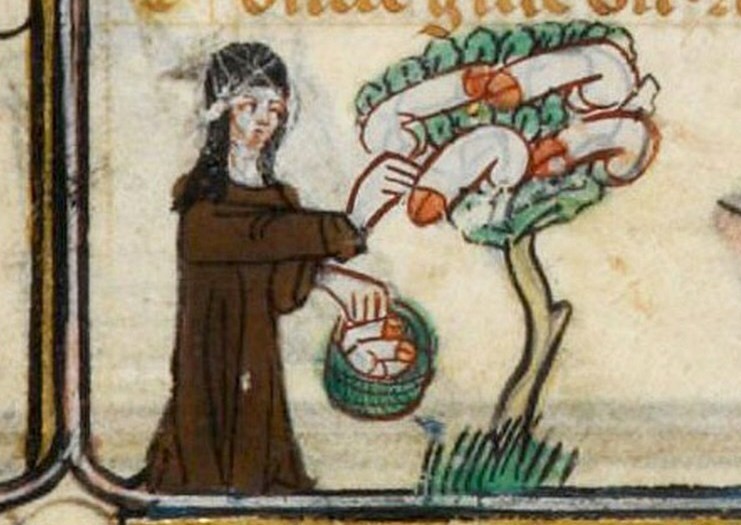Throughout history, people have been uncomfortable with naming genitalia. The word “penis” itself is an example – that used to mean “tail” in Latin! But many more euphemisms have been invented over the centuries… In this blog, I collected some of my favourite penis names in history. And boy, that’s a list.
Writing and talking about genitalia is… a delicate balance. Euphemisms often end up being ridiculous, but just calling the parts by their name is usually considered awkward as well. And this is not just a struggle for modern romance writers! People have been trying to find acceptable names for the, er, masculine parts as long as they have been writing. (Probably longer, but caveman slang unfortunately didn’t survive to this day.)
So what do we have? I’ve categorized my penis names in history by time period, for your convenience.
Roman names for the penis
People weren’t exactly prude in ancient times. (If you doubt me, just read a little about graffiti in Pompeii…) Most of Roman penis names were “normal” metaphors, comparing the genitalia to weapons, poles, pointed instruments and plants. For a more complete overview, you can read this lovely book on Latin vulgarity. Some highlights:
- Tail. This is the word penis itself! In Latin, it originally meant “tail”.
- Mint stalk or little mind.The Latin word mentula was even more vulgar than penis. It’s not entirely certain where it comes from: it may mean both “mint stalk” or “little mind”. (I personally love both options.)
- Awe-inspiring parts. The Latin word verenda, a rather frequent penis euphemism, literally means “those things which should be admired”.
- Sparrow. The Roman poet Catullus spends an entire poem describing how his girlfriend plays with her “pet sparrow” and taunts it with her finger. In return, the sparrow “gives her relief from her pain”.
- The be-testicled lance. This is the Roman writer Pomponius having fun. He made up the word coleatam ‘betesticled’ himself.
Medieval names for the penis
Unfortunately, most sources from the Middle Ages were written down by monks – who generally didn’t spend much time collecting penis euphemisms. Some words still survived, though:
- Fiddle
- Longplum
- Mouse
- Picklock
- Ploughshare
- Prick (this one was also used by Vikings…)
- Spindle
Penis euphemisms in Medieval Arabia
These are taken from The Garden of Sensual Delight, a book written in 15th century Tunisia which gives advice on making love. Luckily for us, the author also includes a chapter on names for the penis. Some of his suggestions are:
- Baldy
- Basher
- Cyclops (the classical “one-eyed snake”)
- Long-neck
- Pigeon
- Poker
- Ravisher
- Rummager
- Stroker
- Thirst-quencher
- Tinkler
- Weeper
Penis names in modern history
Most of these are taken from Jonathon Green’s Dictionary of Slang, and don’t need any explanation…
- Ambassador
- Arbor vitae (this means “tree of life”)
- Bald friar
- Best of three legs
- Credentials (as in “his credentials”)
- Eavesdropper
- Gigglestick
- Master John Goodfellow
- Matrimonal peacemaker
- Maypole
- Pioneer of nature
- Plum-tree shaker
- Scepter
- Shaft of delight (sounds like a modern penis euphemism, but was already used in 1722!)
- Silent flute
Did I forget any highlights in the history of penis names? I’m always happy to add items to the list, so feel free to comment 😊
Do you love historical fun facts? Like my Facebook page to see my newest blogs!
